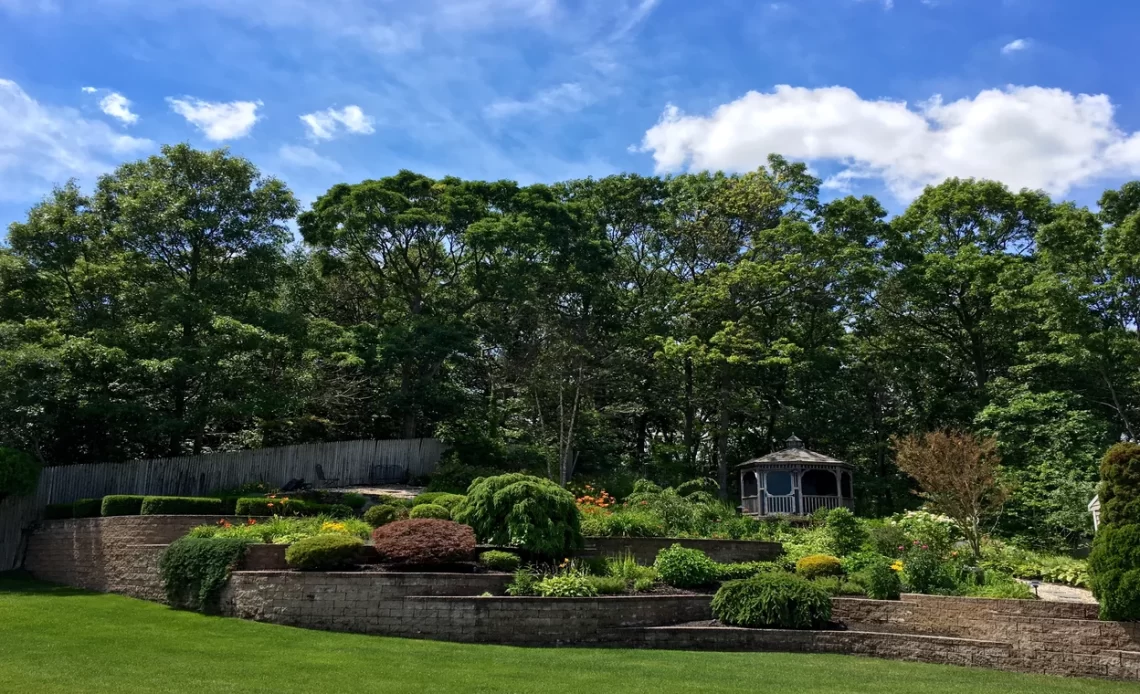
Table of Contents
Introduction
A garden is more than just a collection of plants; it’s a sanctuary of natural beauty, a place for self-expression, and a canvas for creativity. Designing and creating your dream garden is a fulfilling journey that involves careful planning, thoughtful design, and nurturing care. Whether you’re an experienced gardener or a novice with a passion for greenery, this detailed step-by-step guide will walk you through the process of turning your outdoor space into a haven of tranquility and inspiration.
Steps to Create Your Dream Garden
Step 1: Define Your Vision
Your dream garden is an extension of your personality, an expression of your creativity, and a sanctuary where nature and imagination intertwine. As you embark on the journey of crafting your ideal outdoor space, it’s paramount to start with a clear and vivid vision. Defining this vision is the foundational step that will guide every subsequent decision, from plant selection to layout and design.
Envisioning Your Garden’s Style and Aesthetics
Close your eyes and let your imagination run free. What do you see when you think of your dream garden? Is it a riot of colors with flowers of every hue, reminiscent of an English cottage garden? Or perhaps it’s a serene landscape characterized by meticulously placed stones and minimalistic plantings, akin to a Japanese Zen garden? Choose a theme that resonates with you. It could be formal, informal, modern, traditional, or a blend of styles that reflect your personality.
English Cottage Garden Charm
If you’re drawn to the romantic allure of an English cottage garden, imagine a profusion of blossoms, climbing roses, and meandering pathways. Think of overflowing borders that burst with vibrant blooms, creating an impression of controlled chaos and natural beauty.
Japanese Zen Tranquility
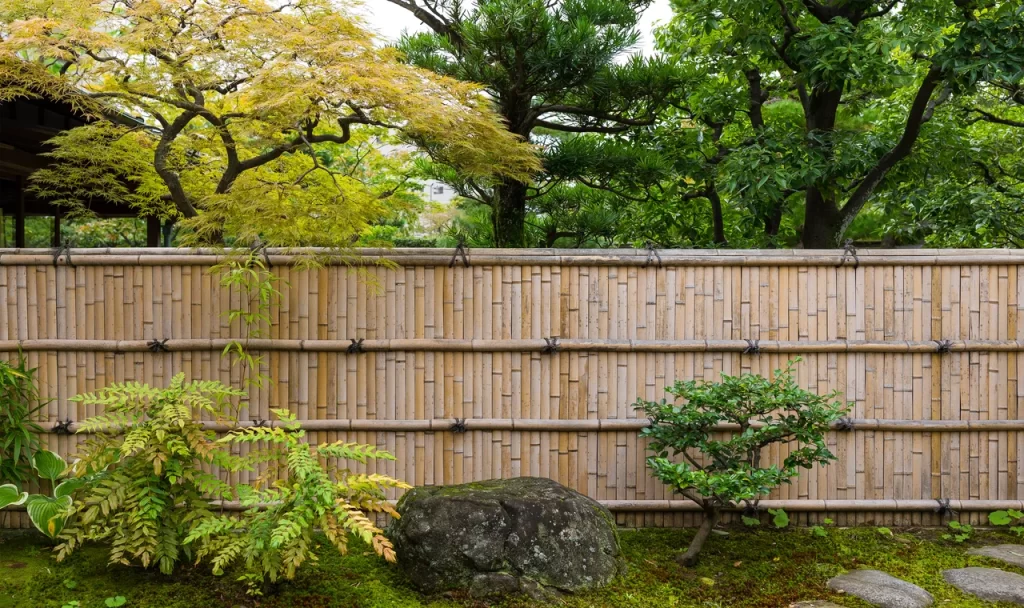
If the idea of a Zen garden resonates with you, picture an environment of simplicity and harmony. Smooth gravel raked into patterns, carefully placed rocks, and contemplative water features embody the essence of Zen aesthetics. This style invites tranquility and reflection.
Reflecting on Purpose and Functionality
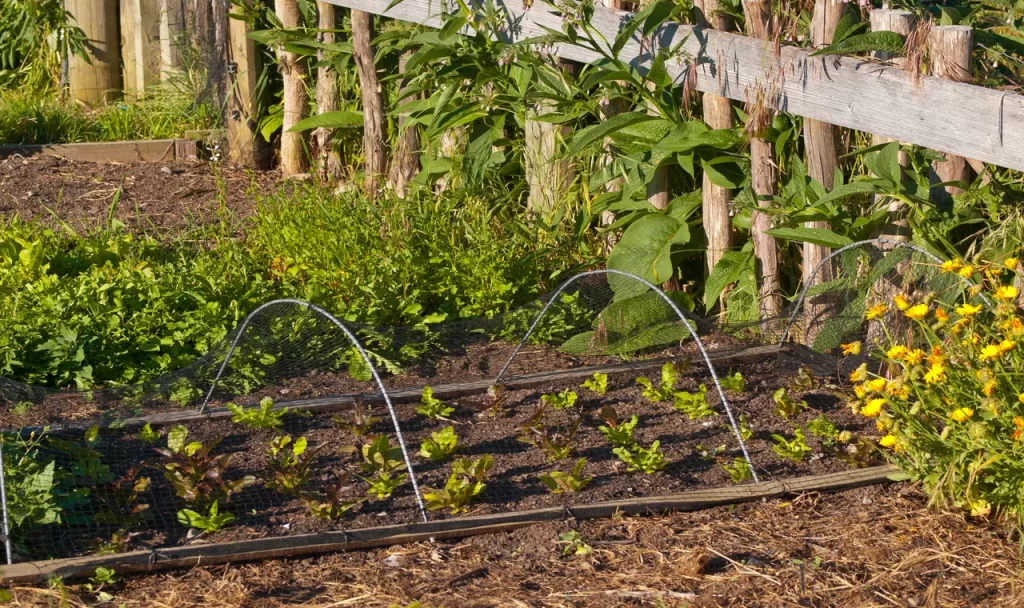
Decide how you’ll use the space. Will it be a peaceful retreat, a space for entertaining, a vegetable garden, or a combination of these?
Outdoor Oasis
Is it meant to be an outdoor oasis where you can unwind after a long day, surrounded by fragrant flowers and the gentle sounds of water? In this case, incorporating comfortable seating areas, cozy nooks, and scented blooms would be paramount.
Family Gathering Space
Alternatively, if you envision your garden as a space for family gatherings and social events, plan for spacious patios or decks, outdoor cooking facilities, and open areas for children to play.
Productive Haven
Maybe you’re eager to embrace a sustainable lifestyle by growing your own produce. Your dream garden can serve as a productive haven with raised vegetable beds, fruit trees, and a composting system.
Focal Points

Identify potential focal points in your garden, such as a beautiful tree, a water feature, or a sculpture.
Step 2: Assess Your Space
Just as an artist studies their canvas before embarking on a masterpiece, a gardener must intimately know their outdoor space before crafting their dream garden. Assessing your space is a critical step that empowers you to work in harmony with the environment, ensuring that your garden flourishes and thrives. This phase involves a keen understanding of the various elements that shape your garden, from sunlight and soil to drainage and microclimates.
Embracing the Sun’s Influence
Sunlight is a vital factor that directly influences the health and growth of your plants. Observe how sunlight interacts with your garden throughout the day:
Full Sun Areas
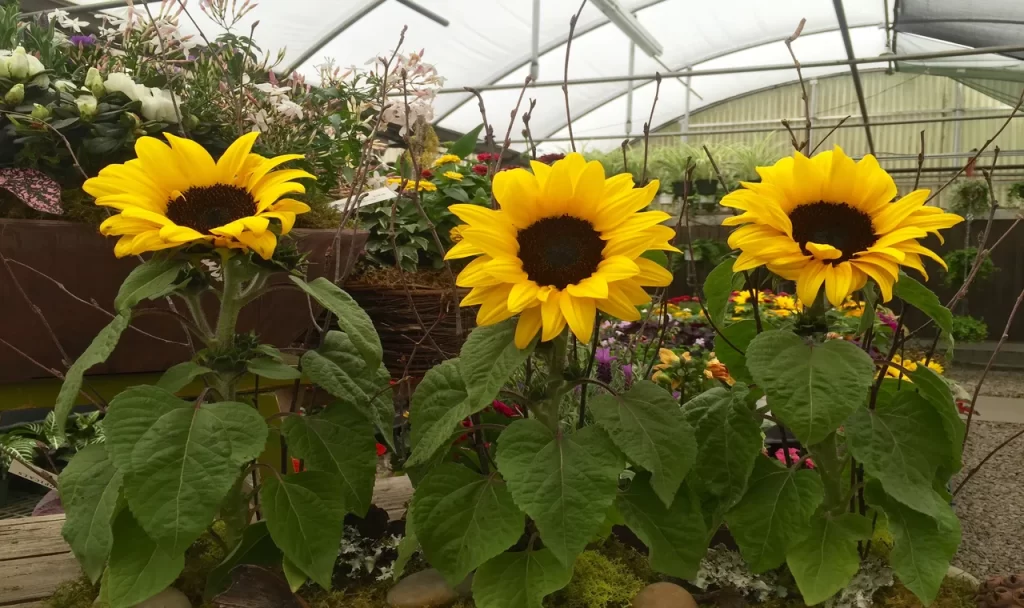
Note locations that receive direct sunlight for most of the day. These areas are perfect for sun-loving plants, such as roses and sunflowers.
Partial Sun / Shade Areas

Identify spots that receive sunlight for only part of the day. These areas can accommodate plants that tolerate some shade, like hostas and ferns.
Full Shade Areas
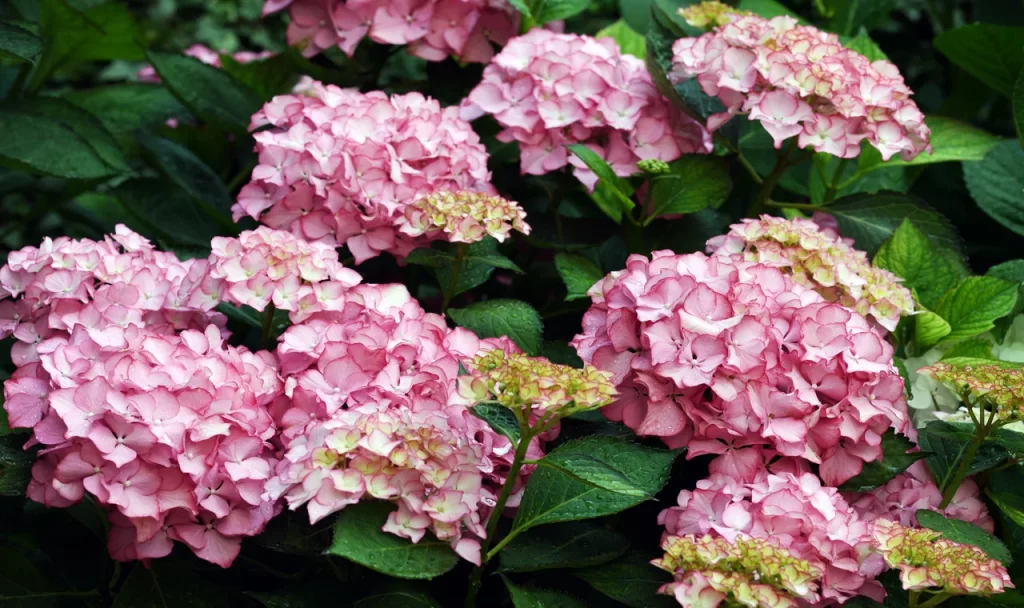
Discover spots where direct sunlight rarely reaches. Such areas can host shade-loving plants, including certain types of ferns and hydrangeas.
By understanding the sunlight patterns in your garden, you can strategically place plants where they will thrive and achieve their full potential.
Decoding Soil Type and Quality
Your soil is the lifeblood of your garden. Its composition, pH levels, and nutrient content determine how well your plants grow. Perform a simple soil test to analyze its characteristics:
Soil pH
Test your soil’s pH to understand whether it’s acidic, neutral, or alkaline. Different plants have varying pH preferences, so knowing your soil’s pH helps you choose suitable plants.
Texture
Determine your soil’s texture by assessing its proportions of sand, silt, and clay. This will guide your watering and drainage strategies.
Drainage
Observe how water flows through your garden after rainfall. Identify areas where water tends to accumulate and areas where it drains quickly.
Understanding your soil type allows you to make informed decisions about soil amendments, watering schedules, and plant selection, ultimately fostering healthy plant growth.
Unraveling Microclimates
Microclimates are small-scale climate variations within a larger area. Your garden might feature pockets with distinct microclimates due to factors like wind, shade, and elevation:
Wind-Exposed Areas
Take note of spots that are consistently windy. Wind can dry out soil and stress plants, so selecting wind-resistant species is crucial for such locations.
Frost Pockets
Identify areas where cold air tends to settle, leading to lower temperatures. Avoid planting frost-sensitive plants in these pockets.
Sheltered Areas
Recognize spots that are sheltered from strong winds. These areas provide a cozy environment for delicate plants.
By acknowledging the microclimates within your garden, you can position plants in locations that match their specific needs, ensuring their survival and thriving.
Step 3: Design and Layout
Just as an architect meticulously plans the layout of a building, the design and layout phase of creating your dream garden is where the blueprint of your outdoor oasis takes shape. It’s a creative and exciting step that combines aesthetics, functionality, and your unique vision to transform your outdoor space into a harmonious and inviting sanctuary. This phase involves translating your ideas into a visual representation that guides the placement of plants, pathways, structures, and other elements.
Sketching Your Vision
Before you dive into the technical details, take a moment to sketch your dream garden on paper or using online design tools. This initial sketch doesn’t need to be precise; it’s a way to capture the essence of your vision and help you visualize the overall layout.
Include the following elements in your sketch:
Plant Beds
Mark out areas where you plan to have flower beds, vegetable plots, or container gardens.
Pathways
Sketch pathways that connect different areas of your garden. Consider curves, straight lines, and intersections that create flow and movement.
Structures and Features
Indicate spaces for seating areas, pergolas, water features, and any other structures you want to include.
Zoning Your Garden
Segment your garden into zones based on their function and sunlight exposure. This zoning strategy ensures that each area serves its purpose effectively and aligns with the unique needs of your plants.
Entertainment Zone
Designate a space for outdoor seating, a dining area, or a fire pit. This zone is ideal for social gatherings and relaxation.
Planting Zone
Create areas for flower beds, shrubs, trees, and other plantings. Consider the height and color of plants to achieve visual harmony.
Pathway Zone
Map out pathways that connect different areas of your garden. Pay attention to their width and shape to ensure easy navigation.
Flow and Accessibility
The flow of your garden is essential for both aesthetics and functionality. A well-designed garden guides visitors through different areas, creating a sense of discovery and cohesion.
Focal Points
Place focal points strategically along pathways or in visible areas. These could be a sculpture, a bench, a beautiful tree, or a water feature.
Pathway Design
Consider the materials for your pathways, whether it’s gravel, stone, or pavers. Pathways can be straight or meandering, depending on your garden’s style.
Transitions
Design smooth transitions between different zones to avoid abrupt changes. Use plants, ground covers, or low hedges to create gradual shifts.
Balance and Visual Appeal
Achieving visual balance is crucial for a pleasing garden design. Distribute elements evenly and consider the principles of symmetry and asymmetry to create interest.
Plant Heights
Arrange plants by their height, placing taller ones at the back and shorter ones in the front. This layering adds depth to your garden.
Color Palette
Choose a color palette that complements your garden’s theme. Use color strategically to create focal points and harmonious groupings.
Textures and Shapes
Incorporate a variety of textures and shapes in your plant selection. Mix foliage types, flower forms, and leaf sizes for dynamic visual appeal.
Your Garden’s Blueprint
As you proceed through the design and layout phase, keep in mind that your garden’s blueprint is a flexible guide that can evolve over time. It’s a visual representation of your creativity, passion, and aspirations for your outdoor space. With a well-planned layout, you’re setting the stage for a garden that not only reflects your vision but also functions seamlessly, fostering a connection between you, your plants, and the natural world.
Step 4: Choose Your Plants Wisely
Selecting the right plants for your dream garden is akin to choosing the perfect palette for a masterpiece. Each plant contributes to the overall composition, adding color, texture, fragrance, and personality to your outdoor canvas. Choosing plants wisely requires a balance between your aesthetic preferences, the needs of the plants, and the unique conditions of your garden.
Embrace Native Plants
Native plants are a cornerstone of ecologically conscious gardening. These plants are well-suited to your local climate, soil, and wildlife, making them easier to maintain and contributing to a healthier ecosystem.
Biodiversity
Incorporating a mix of native plants supports local wildlife, including pollinators like bees and butterflies. Native plants are integral to the food web and help create a balanced environment.
Low Maintenance
Native plants are adapted to your region’s conditions, requiring less water and care compared to non-native species.
Consider Plant Layers
To create visual depth and interest in your garden, incorporate plants of varying heights and growth habits:
Canopy Trees

These tall trees provide shade and structure to your garden. Choose trees that thrive in your climate and won’t outgrow the space.
Understory Trees and Shrubs
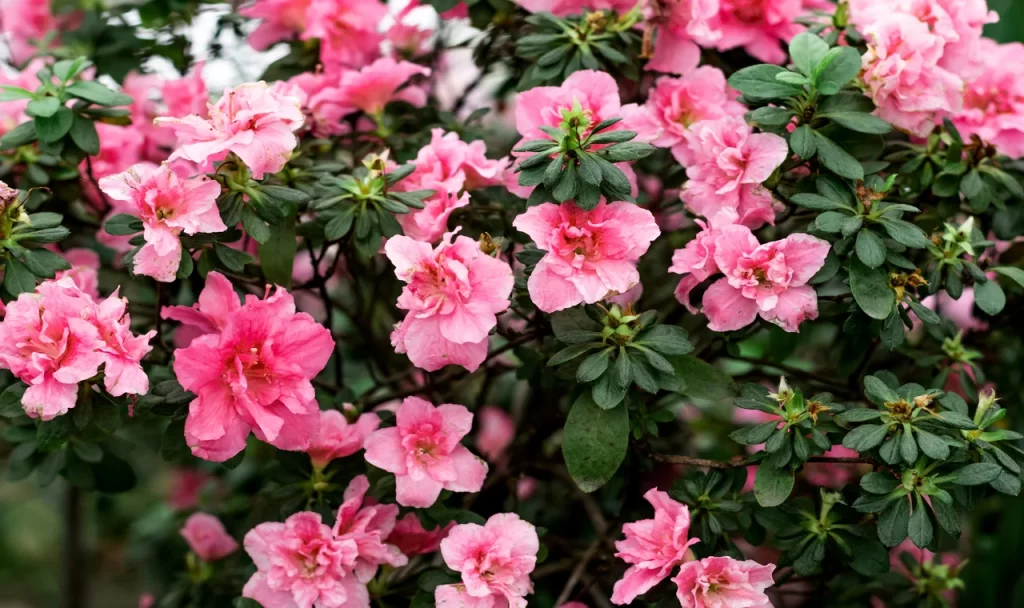
These mid-sized plants add texture and form to your garden. Consider flowering shrubs or those with colorful foliage.
Perennials and Ground Covers
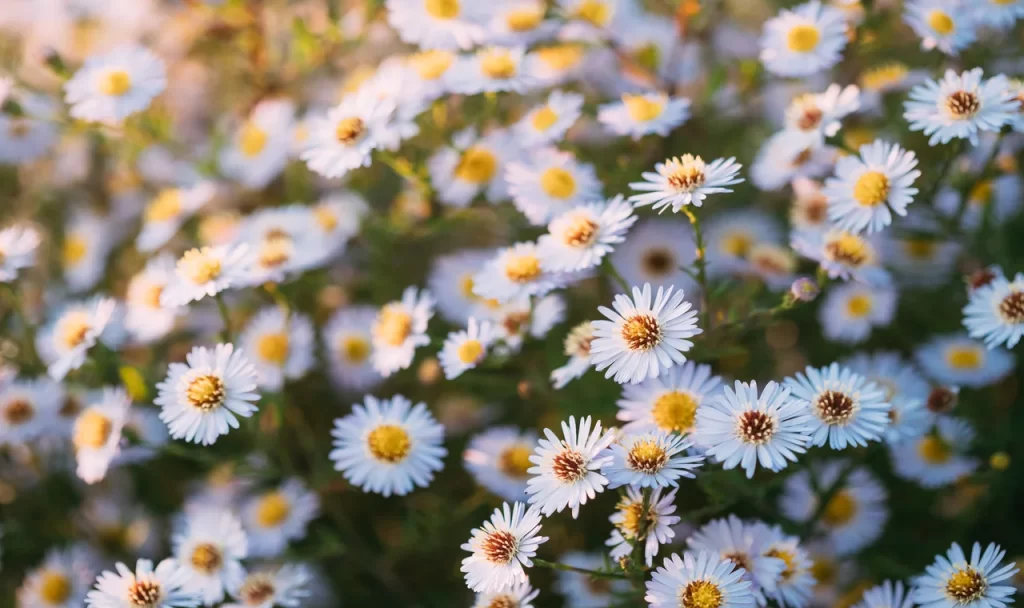
Perennials return year after year, while ground covers help prevent soil erosion and suppress weeds.
Climbers and Vines

These plants can add vertical interest to structures like trellises or fences. Choose climbing plants that suit your garden’s theme.
A Symphony of Colors and Textures
Color and texture are powerful tools in garden design. Create a visually captivating landscape by playing with color combinations and different textures:
Monochromatic Schemes
Stick to a single color family for a serene and harmonious look. For instance, a blue and purple color scheme exudes tranquility.
Contrasting Colors
Create drama by pairing complementary colors (opposite on the color wheel), like purple and yellow or red and green.
Texture Variety
Mix plants with different leaf shapes and textures. Combine fine, feathery foliage with bold, broad leaves to create captivating contrasts.
Seasonal Interest
A well-designed garden is a year-round delight. Aim for a garden that has something to offer in every season:
- Spring: Select bulbs like tulips and daffodils for a burst of color, as well as early-blooming shrubs and trees.
- Summer: Include a mix of perennials, annuals, and flowering shrubs that bloom during the warmer months.
- Fall: Incorporate plants with vibrant autumn foliage, such as maples and oak trees, to create a stunning fall display.
- Winter: Choose plants with interesting bark or evergreen foliage to provide visual interest even during the colder months.
The Art of Balance
As you select your plants, remember that balance is key. Avoid overcrowding by giving plants enough space to grow and breathe. Consider how the plants will look together when they mature and how they’ll interact in terms of size, shape, and color.
Step 5: Prepare the Soil
Preparing the soil is a fundamental step in creating a successful and vibrant garden. Just as an artist primes their canvas before painting, nurturing your soil sets the stage for healthy plant growth, robust root systems, and bountiful blooms.
The Soil’s Role
Soil is more than just dirt; it’s a complex ecosystem of microorganisms, organic matter, minerals, and air. Its ability to retain water, provide nutrients, and support plant roots is essential for your garden’s success.
Soil Testing
Begin by understanding your soil’s composition through soil testing:
pH Levels
Soil pH influences nutrient availability to plants. Most plants prefer a pH range between 6.0 and 7.0. Test kits or professional analysis can reveal your soil’s pH.
Nutrient Levels
Soil tests also reveal nutrient levels, helping you identify deficiencies that might affect plant health.
Amending the Soil
Once you have your soil test results, you can amend the soil to create an optimal environment for your plants:
pH Adjustment
If your soil’s pH is too acidic or alkaline for your chosen plants, amend it with materials like lime to raise pH or sulfur to lower pH.
Organic Matter
Incorporate organic matter like compost, well-rotted manure, and leaf mold into the soil. Organic matter improves soil structure, drainage, and nutrient retention.
Nutrient Boost
Based on the nutrient levels identified in the soil test, add appropriate fertilizers to replenish any deficiencies.
Improving Soil Structure
Soil structure affects water infiltration, root penetration, and overall plant health:
Loosen Compacted Soil
If your soil is compacted, aerate it with aeration tools or by adding coarse sand to improve drainage.
Adding Mulch
Apply organic mulch, such as wood chips or straw, to the soil surface. Mulch conserves moisture, prevents weed growth, and gradually enriches the soil as it breaks down.
Balancing Drainage
Proper drainage is vital to prevent waterlogged soil, which can suffocate plant roots and lead to disease:
Raised Beds
In areas with poor drainage, consider creating raised beds to improve drainage and root health.
Amending Heavy Soil
For heavy clay soils that retain water, add coarse sand and organic matter to enhance drainage.
Preparing Planting Holes
When planting individual plants, create planting holes that match the size of the root ball. Loosen the soil around the hole to allow roots to penetrate easily.
Ongoing Soil Care
Remember that soil preparation is an ongoing process. As you tend to your garden, continue to add organic matter, monitor pH levels, and adjust nutrient content based on the needs of your plants.
Step 6: Planting and Arrangement
Planting and arranging your chosen vegetation is like composing a symphony of colors, textures, and forms within your garden. This phase is where your dreams and plans come to life as you carefully place each plant, considering its individual needs and how it harmonizes with its surroundings. Just as a composer crafts each note to contribute to the whole composition, your thoughtful placement of plants creates a landscape that’s not only visually appealing but also functional and sustainable.
Planting with Precision
Planting involves more than just digging a hole and placing a plant. Proper techniques ensure that your plants establish strong roots and thrive:
1. Choose the Right Timing
Plant during the appropriate season for each plant type. Early spring and fall are often the best times for planting, as the weather is cooler and plants can establish roots before the stress of summer heat or winter cold.
2. Dig the Right Hole
Dig a hole that’s slightly larger than the root ball of the plant. The hole’s depth should be such that the top of the root ball aligns with the soil surface when placed inside.
3. Gently Remove the Plant
Gently remove the plant from its container, being careful not to damage the roots.
4. Loosen Roots
If the plant is root-bound, gently tease out the roots to encourage them to grow outward.
5. Place and Backfill
Place the plant in the hole, ensuring that it’s at the same depth it was in its nursery container. Backfill the hole with soil, gently firming it around the root ball.
6. Water Thoroughly
After planting, water the plant thoroughly to settle the soil around the roots and eliminate air pockets.
7. Mulch
Apply a layer of mulch around the plant to conserve moisture, regulate soil temperature, and prevent weed growth.
8. Staking
For tall or top-heavy plants, consider staking them to provide support while their roots establish.
Creating Visual Harmony
The arrangement of plants is where your creativity truly shines. Consider the following principles to achieve visual harmony:
1. Height Variation
Place taller plants at the back of beds and borders, and shorter plants towards the front. This creates depth and prevents overshadowing.
2. Grouping and Clustering
Group plants with similar water and sunlight requirements together. This simplifies maintenance and allows you to provide care tailored to each group’s needs.
3. Color Coordination
Organize plants by color to create a visually pleasing effect. Use contrasting colors for vibrant drama or complementary colors for a harmonious look.
4. Texture Play
Mix plants with different leaf textures. Pair plants with broad leaves alongside those with delicate, fine foliage to create a dynamic and interesting scene.
5. Focal Points
Position standout plants as focal points. These plants draw the eye and serve as the center of attention within your garden design.
6. Repetition and Rhythm
Repeat certain plants or design elements throughout your garden for a cohesive and rhythmic effect.
Balancing Aesthetics and Functionality
While aesthetics play a significant role, don’t forget the practical aspects of your garden’s arrangement:
Access and Pathways
Ensure that your plant arrangement doesn’t hinder pathways or impede movement within the garden.
Growing Space
Allow ample growing space for each plant. Overcrowding can lead to poor air circulation and disease.
Future Growth
Consider how your plants will look as they mature. Research their growth habits and size to avoid surprises later.
Step 7: Hardscape and Features
In the realm of garden design, hardscape refers to the non-living elements that shape and enhance your outdoor space. These features, ranging from pathways and patios to structures like pergolas and water features, contribute to the overall aesthetic and functionality of your garden.
Creating Pathways
Pathways are more than just routes for getting from one point to another; they guide visitors through your garden, creating a sense of exploration and discovery.
- Materials: Choose pathway materials that complement your garden’s style. Options include gravel, pavers, stepping stones, and natural stone.
- Design: Consider the width of your pathways to accommodate comfortable walking and ensure that they blend seamlessly with the surrounding landscape.
- Curves and Lines: Curved pathways add a sense of movement and intrigue. Straight pathways create a formal and organized look.
Structures for Elevation and Shade
Structures like pergolas, trellises, and arbors add vertical interest and provide support for climbing plants. They also create shaded areas, adding to the functionality and aesthetics of your garden.
- Pergolas: These open structures often feature a lattice roof, providing filtered shade and creating a visually appealing focal point.
- Trellises: Trellises are versatile and can be used against walls or fences. They support climbing plants and create privacy screens.
- Arbors: Arbors are typically arched structures that create an entryway or passage. They add an element of romance and elegance to your garden.
Water Features for Serenity
Water features bring soothing sounds and a sense of tranquility to your garden. Whether it’s a bubbling fountain, a tranquil pond, or a flowing stream, water can transform your outdoor space into a calming oasis.
- Fountains: Fountains range from simple wall-mounted designs to elaborate tiered structures. Choose one that fits your garden’s style.
- Ponds: Ponds can host aquatic plants and even fish. They attract wildlife and provide a serene focal point.
- Streams and Waterfalls: These naturalistic features add movement and a sense of harmony with nature. They can be integrated into the landscape to mimic the flow of a natural stream.
Outdoor Seating and Gathering Areas
Designate spaces where you can relax, entertain, or simply enjoy the beauty of your garden.
- Patios: A well-designed patio offers a comfortable area for outdoor dining and relaxation. Choose materials that match your garden’s aesthetic.
- Seating Nooks: Intimate seating areas surrounded by plants create cozy retreats within your garden.
- Fire Pits: Fire pits provide warmth and ambiance, extending the usability of your garden into cooler evenings.
Balancing Function and Aesthetics
While hardscape elements add structure and function to your garden, their design should also complement your overall vision and style:
- Theme Consistency: Ensure that your hardscape elements align with the theme of your garden. For example, a formal garden might benefit from structured pathways and symmetrical structures, while a naturalistic garden could feature meandering paths and organic shapes.
- Materials: Choose materials that harmonize with your plant choices and the architectural style of your home. For instance, a cottage garden might embrace rustic materials, while a modern garden could feature sleek and contemporary elements.
Step 8: Maintenance and Care
Creating a dream garden is a labor of love, and its continued beauty and vitality depend on the care and attention you provide. Much like tending to a living work of art, garden maintenance involves a combination of tasks that ensure your plants thrive, your hardscape elements remain pristine, and your outdoor space remains a haven of tranquility and inspiration.
Watering Wisely
Proper watering is essential for plant health, but it’s important to strike the right balance:
- Regular Watering: Develop a consistent watering schedule, ensuring that plants receive enough moisture to stay hydrated.
- Deep Watering: Water deeply to encourage plants to develop strong root systems. Shallow watering can lead to weak roots.
- Morning Watering: Water in the morning to minimize evaporation and give plants ample time to absorb moisture before the heat of the day.
Pruning and Deadheading
Pruning and deadheading are artistic practices that shape the form and promote the vitality of your plants:
- Pruning: Remove dead, damaged, or overgrown branches to improve air circulation, encourage new growth, and maintain a pleasing shape.
- Deadheading: Remove spent flowers to prevent the plant from putting energy into seed production. This often leads to more prolific blooming.
Weeding and Mulching
Weeding is the art of maintaining a clean canvas by removing unwanted plants, while mulching adds layers of texture and protection:
- Weeding: Regularly remove weeds that compete for nutrients and water with your desired plants.
- Mulching: Apply a layer of mulch around plants to conserve soil moisture, suppress weed growth, and regulate soil temperature.
Fertilizing Thoughtfully
Fertilizing provides the nutrients your plants need to thrive:
- Soil Testing: Regular soil testing can guide your fertilization routine by identifying nutrient deficiencies.
- Slow-Release Fertilizers: Opt for slow-release fertilizers that provide a steady supply of nutrients over time, reducing the risk of over-fertilizing.
Pest and Disease Management
Vigilance is key to preventing and managing pest and disease issues:
- Observation: Regularly inspect your plants for signs of pests or diseases, such as discolored leaves, wilting, or unusual growth.
- Integrated Pest Management (IPM): Use environmentally friendly methods to manage pests, such as introducing beneficial insects or using natural repellents.
Seasonal Adjustments
Garden maintenance changes with the seasons, and each season brings its own set of tasks:
- Spring: Prune dead or damaged branches, fertilize, and prepare new planting areas.
- Summer: Water adequately, monitor for pests, and deadhead to encourage continuous blooming.
- Fall: Clean up fallen leaves, cut back perennials, and prepare the garden for winter.
- Winter: Protect plants from harsh weather, provide winter mulching, and plan for the upcoming growing season.
The Art of Observation and Adaptation
Successful garden maintenance is an art that requires keen observation, adaptability, and a deep connection with your garden:
- Observe: Regularly spend time in your garden, observing changes in plants, soil, and overall aesthetics.
- Adapt: Respond to the evolving needs of your garden. If a plant isn’t thriving in a particular spot, consider relocating it to a more suitable location.
Conclusion
Creating your dream garden is a rewarding and fulfilling journey that combines your creativity with nature’s beauty. By following this step-by-step guide, you can transform your outdoor space into a haven that reflects your unique style and brings joy to your everyday life. Remember, gardening is a process that evolves over time, so be patient and enjoy every moment of your garden’s growth and transformation.
